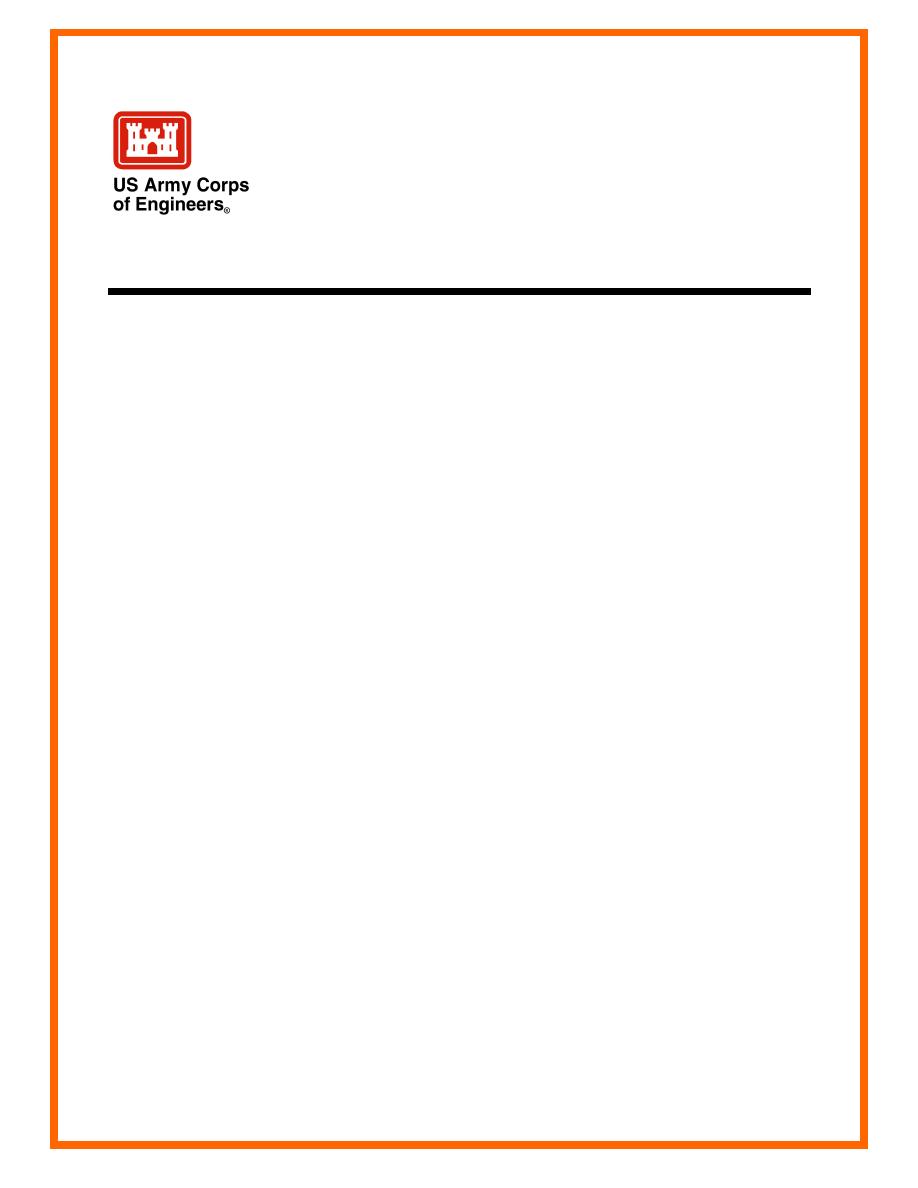
ERDC/CHL CETN-IV-25
June 2000
Enhancements of the Numerical Model
of the Longshore Current NMLONG to
Include Interaction Between Currents
and Waves (NMLong-CW)
by Magnus Larson and Nicholas C. Kraus
PURPOSE: The Coastal Engineering Technical Note (CETN) herein describes the Numerical
Model of the Longshore current for Current and Waves (NMLong-CW) that accounts for the
interaction between a current and surface waves.
NMLong-CW can simulate wave
transformation, the steady-state wave-generated longshore current, and change in water level at
an inlet by waves and wind. The interaction between a current and waves can significantly alter
the wave height and wavelength. NMLong-CW is a one-dimensional model and is limited to
situations were longshore uniformity applies.
BACKGROUND: The original numerical model NMLONG (Kraus and Larson 1991; Larson
and Kraus 1991) was developed under the U.S. Army Corps of Engineers' Dredging Research
Program. It calculates nearshore wave transformation, water level change, and longshore current
across a single profile line, under the assumption of longshore uniformity in the profile and
hydrodynamic processes. NMLONG solves the wave energy flux conservation equation,
accounting for wave shoaling, refraction, breaking, and reforming. The transformation of
random waves is calculated by Monte-Carlo simulation. Wave energy dissipation accompanying
depth-limited breaking is described in accordance with Dally, Dean, and Dalrymple (1985). The
cross-shore momentum equation is solved numerically to obtain the change in water level, and
the equation governing alongshore momentum gives the distribution of the steady (time average
on a wave scale) longshore current velocity across the shore. The longshore current and change
in water level (setup and setdown) driven by a local wind can also be simulated. Nonlinear
bottom friction is computed from an efficient approximation, and lateral mixing is modeled with
an eddy viscosity that depends on the local wave orbital velocity and wave height.
Both tidal and wind-generated currents can be comparable to or exceed the strength of the wave-
generated longshore current. Currents produced independently of waves as by wind and the tide
may be in opposite directions, producing complex distributions of the current across the shore.
The capability of representing the action of currents in NMLONG and the interaction between
the current and waves resulted in a substantially revised model and name as NMLong-CW,
where CW stands for interaction between currents and waves. In the revised model, wave
transformation in the presence of a current is calculated from conservation of wave action flux
instead of wave energy flux, and the wave dispersion relationship is modified to include a
current.
NMLong-CW was revised to describe both depth- and steepness-limited wave breaking, and a
unified formulation to quantify energy dissipation produced by these two types of breaking is
employed. As before, the longshore current and mean water level are calculated through the
alongshore and cross-shore momentum equations, respectively. However, in the alongshore
1


 Previous Page
Previous Page
